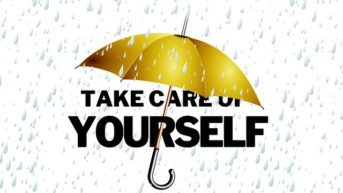The North American stock markets have been led by the bull for about 10 years. We know that a market crash will eventually fall upon us. Here are a few tips for you to prepare to be worry free.
Have ample cash flow to pay for your expenses
The best way to prepare for a market crash is to ensure that you won’t need to sell a single share of stock to pay for your expenses, including your needs and wants. First cover your needs. Then cover your wants.
It makes it easier both financially and psychologically if you have other sources of income outside your investment portfolio. For example, if you’re working full-time or part-time, you earn active income and have regular inflow. Otherwise, you may earn income from rental properties or have side gigs.

In any case, review your stock portfolio now to ensure your dividend income stream is safe. Safe dividends come from businesses that generate stable earnings or cash flow and stocks that have safe payout ratios.
For example, Canadian Imperial Bank of Commerce’s (TSX:CM)(NYSE:CM) year-to-date adjusted diluted earnings per share have been kind of weak and have specifically fallen 1.5% over the comparable three quarters a year ago. However, because the bank had a safe payout ratio of less than 50%, it still announced a year-over-year dividend hike of 5.9%.
Establish an emergency fund
Experts say it’s best to have at least three to six months’ worth of living expenses that cover your needs, including mortgage or rent, utilities, gas, and food.
If that’s $2,000 a month, then you need $6,000-$12,000 sitting in a savings account as your emergency fund. This money should be solely used for emergencies only and be replenished as soon as possible after you draw money from it.
Prepare with regular mental visualization
In the last market crash that was triggered by a financial crisis, the North American stock markets fell about 50% from peak to trough. As a scary example, CIBC stock fell nearly 60% over the duration of one year and five months from peak to trough.
Yet, the bank did not cut its dividend. It had enough earnings to cover for its dividend.
As the bull has been running for pretty much 10 years and the stock markets are near their all-time highs, it’s a good exercise for investors to prepare for a market crash by regularly visualizing their stock portfolios being cut in half.
Actually, it might not be that bad when it occurs. For example, if your portfolio is populated with recession-resilient stocks, it will likely fall much less than the market when a crash occurs.
Importantly, during a market crash, rationalize that the profits of your carefully chosen stocks are still largely intact and that your portfolio as a whole should survive and thrive just fine. If that’s not what you’re thinking right now, it’s time to review and re-balance your portfolio to make it recession ready.







